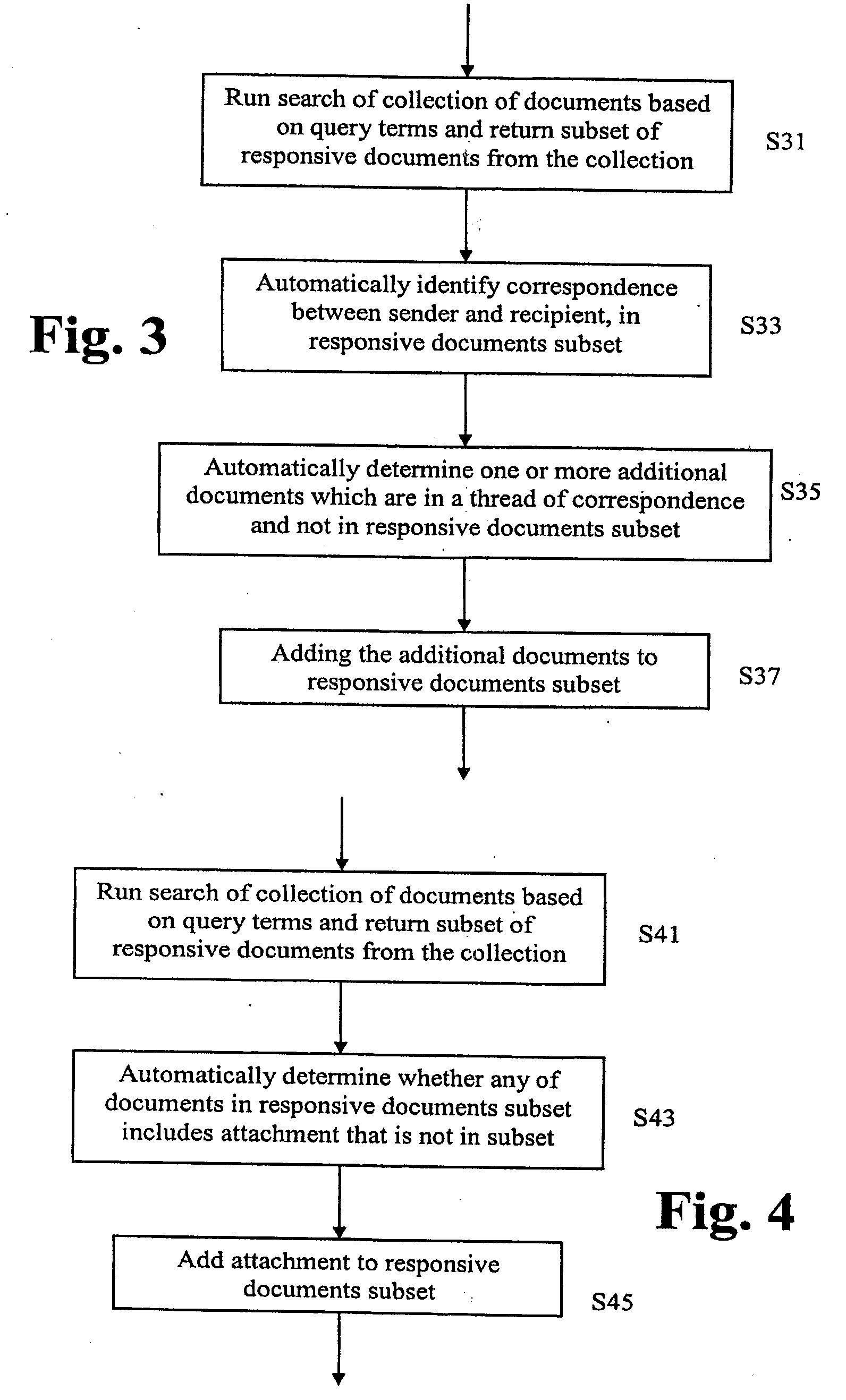System and method for utilizing advanced search and highlighting techniques for isolating subsets of relevant content data
- Summary
- Abstract
- Description
- Claims
- Application Information
AI Technical Summary
Benefits of technology
Problems solved by technology
Method used
Image
Examples
Embodiment Construction
[0030]Non-limiting details of exemplary embodiments are described below, including discussions of theory and experimental simulations which are set forth to aid in an understanding of this disclosure but are not intended to, and should not be construed to limit in any way the claims which follow thereafter.
[0031]The present invention relates to systems and methods involving techniques for organization, review and analysis of content data (in paper or electronic form), such as a collection of documents. The systems and methods described here utilize advanced searching, tagging, and highlighting techniques for identifying and isolating relevant content data with a high degree of confidence3 or certainty from large quantities of content data. 3 Definition of Confidence Level per the US Department of Justice: “The level of certainty to which an estimate can be trusted.” www.ojp.usdoj.gov / BJA / evaluation / glossary / glossary_c.htm
[0032]The system search techniques used here search the conten...
PUM
 Login to View More
Login to View More Abstract
Description
Claims
Application Information
 Login to View More
Login to View More - Generate Ideas
- Intellectual Property
- Life Sciences
- Materials
- Tech Scout
- Unparalleled Data Quality
- Higher Quality Content
- 60% Fewer Hallucinations
Browse by: Latest US Patents, China's latest patents, Technical Efficacy Thesaurus, Application Domain, Technology Topic, Popular Technical Reports.
© 2025 PatSnap. All rights reserved.Legal|Privacy policy|Modern Slavery Act Transparency Statement|Sitemap|About US| Contact US: help@patsnap.com



